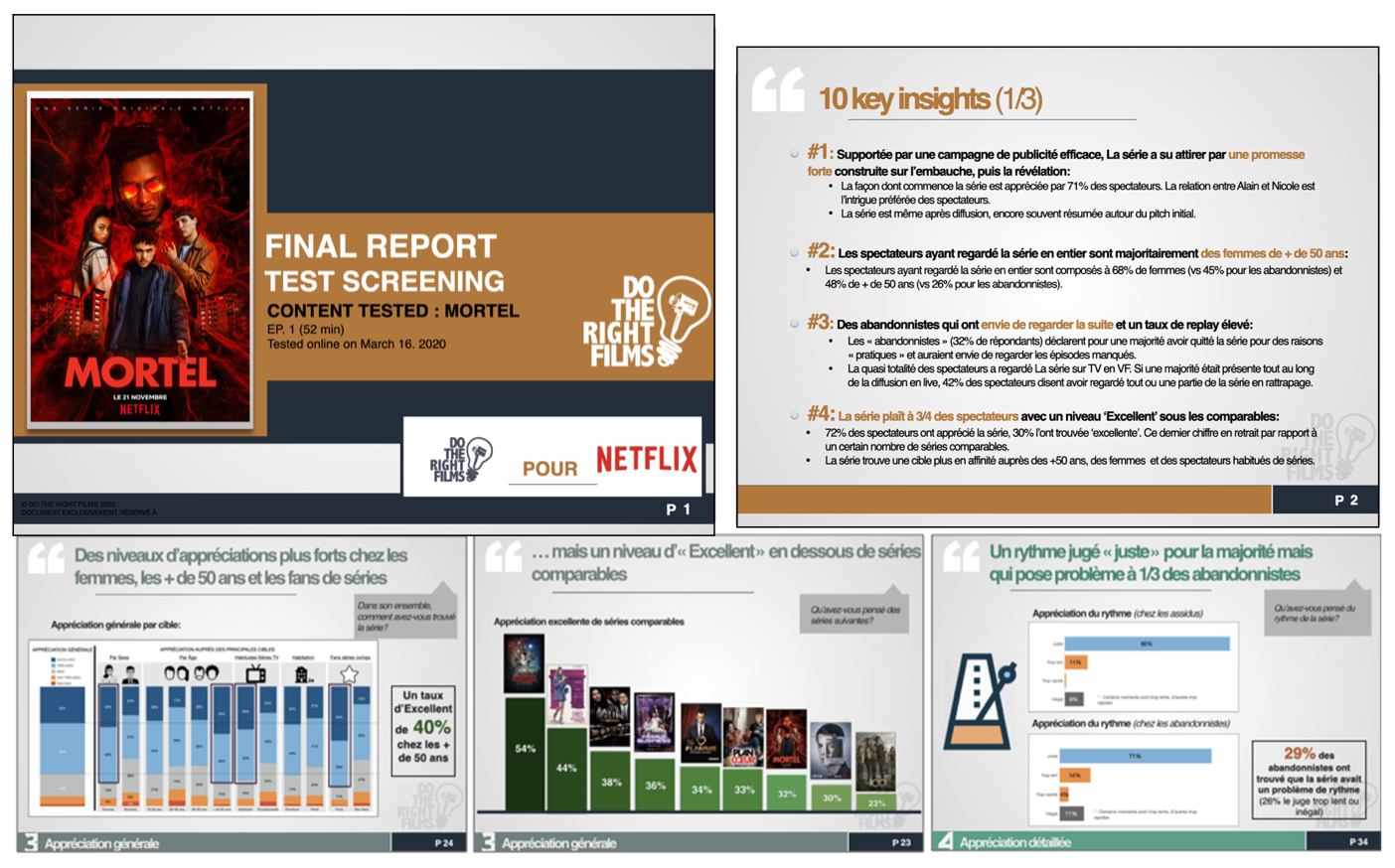An in-depth analysis of the drivers and barriers of your show
TV SHOW TEST SCREENINGS
THE AUDIENCE
A robust sample is designed, matching the audience brief (age, gender, socio-economic status, place of residence, TV show viewing habits…) and will secure a strong sub-sample on each target audience.
To make sure the audience shows interest in the TV show, the title, the cast and the synopsis are announced in recruiting the process.

A SECURED SCREENING PLATFORM
To make sure your content is fully protected, we have partnered with a highly secured platform for online screenings that includes the following advanced technology.


DELIVERABLES
Our final report captures the major findings and insights, pointing specifically towards action steps and areas that could be reworked.



